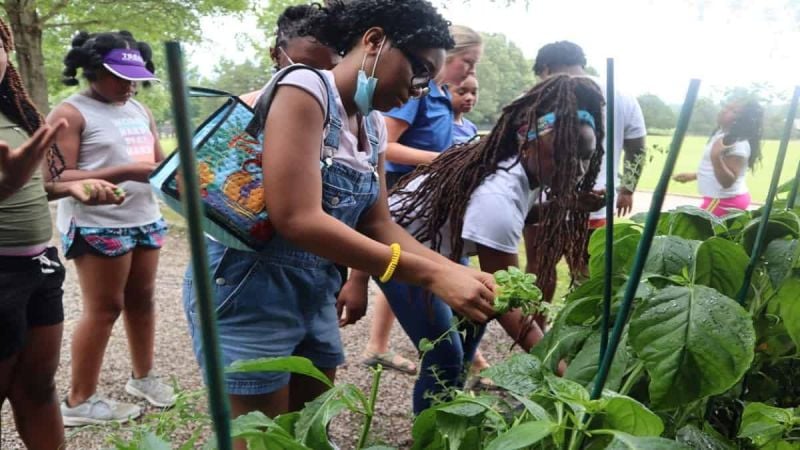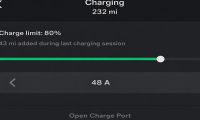If there is one thing that is certain about Ford, it is simply that the automaker likes restoring pieces of the country. Restoring Americana has been at the forefront of the automaker's planning for more than a century.
Ford Has Done This For Over 100 Years
In Massachusetts, for example, Henry Ford purchased several properties west of Boston. He began a restoration project that has given the Bay State some of the finest examples of Americana around. There's the Old Grist Mill in Sudbury, Massachusetts. It is a working water-powered mill that shows how farmers milled corn and wheat into corn and wheat flour for bread and other items. You can purchase fresh grain products daily in season.
Ford also restored the famed Wayside Inn, restored by Ford and made famous by Longfellow's "Tales of the Wayside Inn." And there's the Martha-Mary Chapel a short distance away, and it continues to serve many brides and grooms today.
One of Henry Ford's visions was an affordable vehicle for a farming nation, with the Model serving as a motor-driven hub that combined many features.
The Model T could switch over fairly quickly to become a farm tractor by swapping out the rear wheels and changing the body. The same vehicle could also serve as winter transportation with the addition of a second rear axle and tank-like tracks to dig into the snow. Snow skis were available for the front wheels to complete the swap-0ut to an early snowmobile.
Vehicle Was Seen By Torque News
(Torque News Author aside: many years ago, I saw a complete Ford Model T stored near Boston with the skis tucked into the passenger body and the second axle mounted. The vehicle also had the tractor capability nearby. I don't know what happened to the vehicle as I saw it half-a-century ago as I researched a story on a local auto museum and some of the key vehicles stored there.)
Getting back to Ford's interest in historic and community preservation, the automaker is restoring a central train station in downtown Dearborn. It has also done similar work with its modernization of the River Works, the site of Ford's first assembly line.
Ford's urge to protect and restore the country continues today with the announcement of an important stream restoration project. The announcement came at this week's Memphis Auto Show. Ford and the University of Tennessee (UT) agreed to restore a major stream at Lone Oaks Farm.
At the show, the automaker and the University of Tennessee (UT) Institute of Agriculture announced the historic agreement that will propel economic development, education, and conservation throughout the mid-south.
Tennessee Project Will Restore Stream
The agreement will restore the stream waters that flow through the University's Lone Oaks Farm. UT Extension is developing Lone Oaks, a 1,200-acre facility, into a world-class 4-H and STEM (science, technology, education, and math) Education Center in Middleton, Tennessee. Located 45 minutes to the east of Memphis, Lone Oaks is near Ford's BlueOval City.
Both properties are under development. Early in April, UT Extension celebrated laying the top beam of the first of many overnight camping facilities at the 4-H Center. Education programs at Lone Oaks already serve about 5,000 K-12 students each year. The new facility will allow the program to continue growing and offer overnight STEM programs and camps. Knowing the workforce needs in STEM fields are growing across the region, the timing couldn't be better.
"Every year, UTIA provides valuable life skills [and] STEM education opportunities to nearly 112,000 students across Tennessee," said UT President Randy Boyd. "Ford's investment in Lone Oaks will ensure our 4-H programs will be able to expand STEM education to Tennessee students for years to come."
Linda C. Martin, UTIA interim senior vice-chancellor and UT's senior vice president, says Tennessee has 7,216 4-H clubs, the most of any state. "The ability to offer overnight educational programs and daily STEM activities at Lone Oaks in West Tennessee is a tremendous enhancement to the region's educational opportunities," she adds.
Project Is A Major Requirement
The Clean Water Act of 1972 requires that any impact on streams and wetlands from development projects, such as buildings and roads, be offset by restoring and permanently protecting an equivalent amount of habitat elsewhere.
With the size of the Blue Oval City project requiring a significant stream restoration project, it made sense for the automaker to partner with UT on the plan. UT was excited by the prospect of helping to meet the need for this project and, at the same time, restoring the stream at Lone Oaks Farm.
The Ford-UT agreement is unique. It allows Ford and UT to benefit in two ways. First, it lets Ford meet its regulatory requirements. Second, the agreement benefits the region through STEM education and 4-H Youth Development at Lone Oaks. The agreement totals $16.5 million, which covers the construction cost of restoring some 20,000 feet of streams on the Lone Oaks property while providing long-term financial sustainability for Lone Oaks' educational programs. The UT Foundation will invest the remaining funds to support educational programs in perpetuity.
"At Ford, our goal is to create a positive impact on people and the planet. We're proud to enter into this innovative partnership with the University of Tennessee that will help restore and protect the streams and wetlands at the Lone Oaks Farm and create educational opportunities that will inspire and benefit future generations," said Bob Holycross, vice president of sustainability, environment and safety engineering at Ford. "This is just one way we can fulfill our purpose to help build a better world."
Ford, UT Project Has Partners
The project involves many other partners, including The Tennessee Wildlife Federation and the West Tennessee River Basin Authority (WTRBA). The Tennessee Wildlife Federation is a nonprofit that advances conservation in Tennessee through advocacy, education, and on-the-ground conservation projects, including stream and wetland restoration.
WTRBA, an independent unit of the Tennessee Department of Environment and Conservation, manages rivers, streams, lakes, and other water issues in West Tennessee. WTRBA is responsible for the design, engineering, construction, and monitoring the stream restoration.
"In addition to restoring the stream, this partnership will create additional opportunities for our UT Extension professionals to develop STEM programs with an emphasis on workforce skills and preparation for higher education. As the needs of employers in the region and state change, we are tailoring our educational programs to match those needs," says UT Extension Dean Ashley Stokes.
Project Is An Investment In The Future
"The vision for Lone Oaks Farm includes introducing young people to agriculture and conservation through STEM education programs. We are extremely excited to partner with Ford and support both their sustainability goals and the University's and community's education goals," says Ben West, director of strategic partnerships with UTIA. "This investment will provide quality, hands-on education programs for students throughout the region for decades to come."
If you want more information on this project, check out the University of Tennessee Institute of Agriculture website, utia.tennessee.edu.
Photo courtesy Ford Motor Co.
Marc Stern has been an automotive writer since 1971 when an otherwise normal news editor said, "You're our new car editor," and dumped about 27 pounds of auto stuff on my desk. I was in heaven as I have been a gearhead from my early days. As a teen, I spent the usual number of misspent hours hanging out at gas stations Shell and Texaco (a big thing in my youth) and working on cars. From there on, it was a straight line to my first column for the paper, "You Auto Know," an enterprise that I handled faithfully for 32 years. Not many people know that I also handled computer documentation for a good part of my living while writing YAN. My best writing, though, was always in cars. My work has appeared in Popular Mechanics, Mechanix Illustrated, AutoWeek, SuperStock, Trailer Life, Old Cars Weekly, Special Interest Autos, etc. You can follow me on: Twitter or Facebook.













Comments
Howdy Im at work surfing…
Permalink
Howdy Im at work surfing around your blog from my new iphone 3gs Just wanted to say I love reading through your blog and look forward to all your posts Carry on the superb work